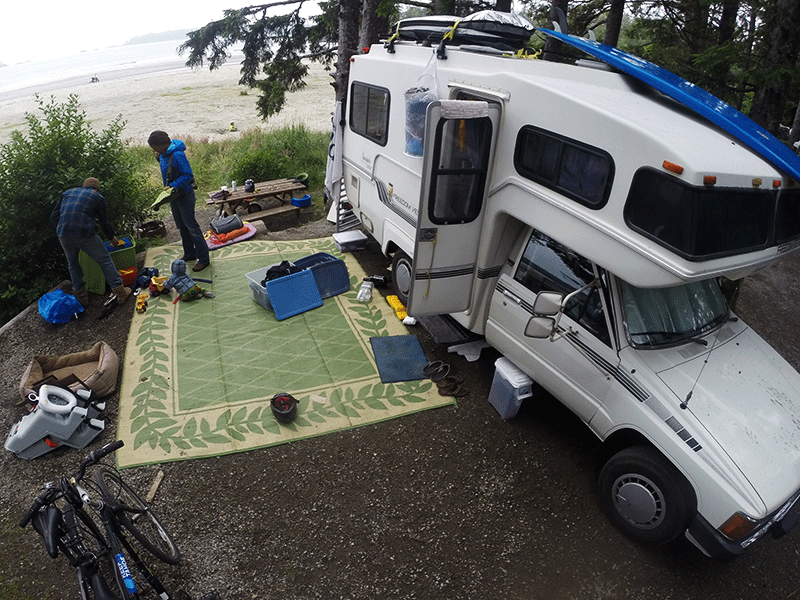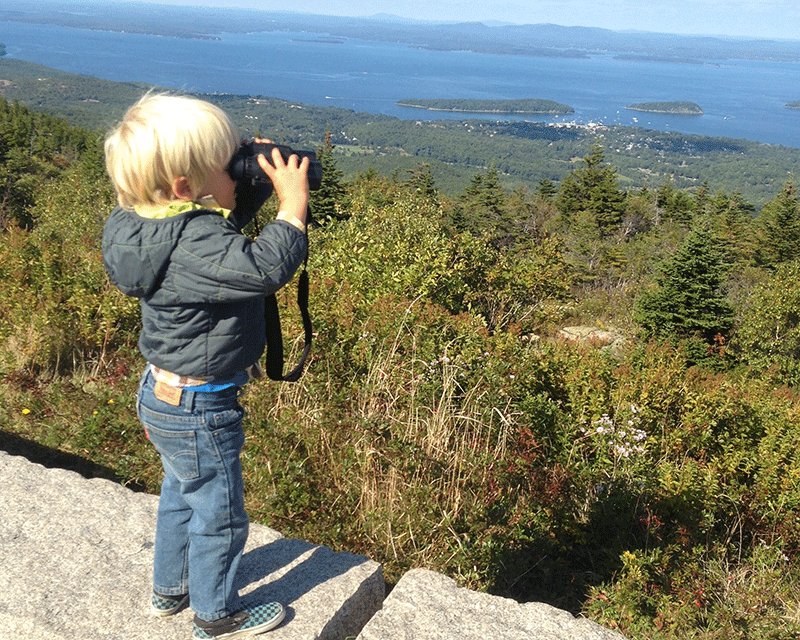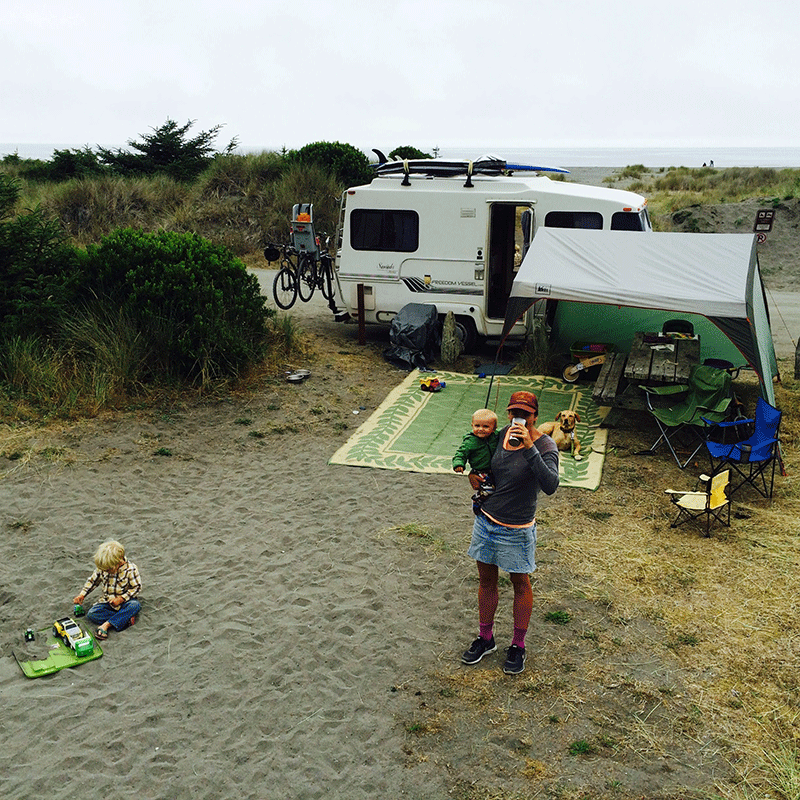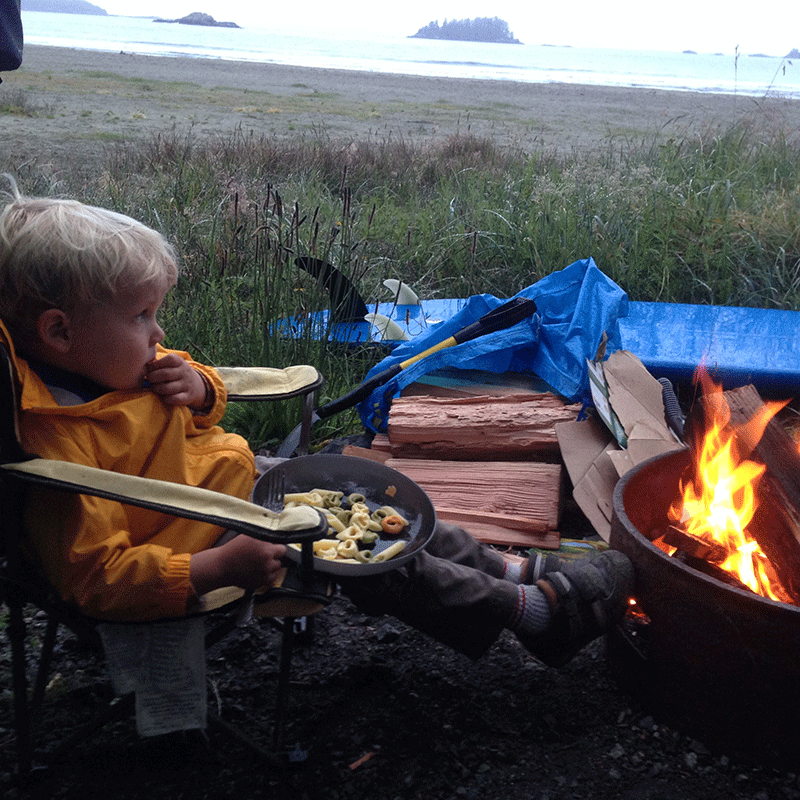My first big vanlife trip was 1998 and gas was $.98 cents. I never knew anyone else that “lived” it, aside from a few folks I met (face to face in real life) on Phish Tour. There was no books about it, or blogs, no hashtags, or Facebook pages, no outdoor companies posting glossy photos of cute girls in their vans, no self-published books from couples on the road, and there was not even Google maps. Somehow I organically developed a desire to find a VW Bus and drive it…far. I’m not saying no one ever did it, nor by any means was I the first. It just wasn’t as sub-culturally trendy and there was no “vanlife movement” or whatever you call what is going on right now. I wanted to share my story and my writing and my experiences, but there was no internet, really, nor did any publishers give me the time of day on my proposal. I remember the day almost ten years later when I saw “The California Surf Project” book on the shelf and thought “wow someone did it!”
It was a lime green 1978 Westfalia and my packing list included a skateboard, a bongo drum, surfboards, film, bootleg Grateful Dead cassettes, and Top Ramen. California here we come! I’d looked for a VW bus for a few years at age 19 I and finally found one. It was in near mint condition and I paid $2500 for it, which was a ton of money at that time. Buses were rare in coastal New Jersey, had I wanted a yellow Corvette, it would have been a piece of cake. With no internet, you had to check the classified pages in the newspaper and stop and talk to every van you saw, especially the ones at mechanic shops. Almost 8,000 miles and 13 National Parks later, I returned home to the Jersey Shore missing a gas tank cap and with a rebuilt engine (which I had done with the idiots guide in a parking lot at Old Faithful in Yellowstone National Park). Recently, I did that trip again only this time I started and finished from my home in Southern California. On my packing list were diapers, Tonka trucks, stuffed animals, and even a stroller (and of course the skateboard and surfboards). Not much has changed in the priority of the mission, create memories and live simply. This would be my 4th and 5th ‘scenic route’ cross country trips. They each keep getting better and better.

Vanlife with kids is a whole different ballgame. Most people skip it for Disneyland and hotels with pools. For me, my best friend and travel partner is my wife, and we have lived extensively in vans, in a tiny cabin in the woods, in tents in Alaska…. we’ve tested the relationship in small spaces and adventurous endeavours, so that was no concern. Bringing our kids wasn’t a concern for us either, but for some, it was and still is. Some parents even call us crazy, and others ask just plain, “Why the hell would you wanna do that?” Well, it is in that element where we feel most alive, on the road in our van, and we like to think we are pretty good at it. We hope to inspire other people with kids to get out there and explore. No offense, but it is way too easy if you are 25 yrs old and you travel around in your hip little van. In my opinion, if your not, your blowing it! What are you waiting for. Throw in a significant other, some kids, middle age, a dog, financial confines, and now your earning your vanlife badge.
This time we set out in our 18ft 1986 Toyota Sunrader (after two weeks in our 1984 Westfalia we turned around, it wasn’t the right tool for the job for us).

Like original Nintendo, we blew on it, jiggled it, and hit the reset button. The Westy was easy to sell but hard to let go of, but I knew we needed a different tool for this mission. We found the Sunrader in Hollywood, and bought it on site. The previous owner was living in it in his family’s backyard and had never driven it since he bought it at auction from the original owner, a doctor. I made some tweeks like surf racks, stereo, tires, and suspension. The Sunrader became our home for 5 months. From Southern California to Vancouver Island to Colorado to New England to the Smokey Mountains and back through the dessert. No problems other than a broken fan belt, which of course, happened in the rain. Our youngest son couldn’t even crawl when we left on our trip, when we returned he could walk. My 4 year old had more stamps in his National Park Passport book than most retirees. He still remembers most of the trip and oftern asks “when are we going back to Whistler?”
I’d like to take our experiences and share with you some of the “tricks of the trade” from our Freedom Vessel adventures with two young kids. In addition, I’ll point out some of the things we look for in a campsite. If you want to see some videos you can find several volumes on our Youtube Channel.
What to Bring:

Very little… You are going to over pack, I guarantee it. You think since you are bringing kids that you’ll need more, well, you don’t. We ditched most of the stuff along the way at thrift stores that we “thought” we needed. After about a week, your kids will be throwing stick boats down rivers and climbing trees. I’ll leave the obvious essentials up to you, like sunblock, toothpaste, first-aid kit, and pajamas-with-feet.
Here are some of our favorite “vanlife for children” essentials:
1) Hook-on high chair -we use Inglesina Chair and love it. You can use this chair at park picnic tables, at breweries, at friend’s houses, and it can be washed easily. If your young one is learning to crawl or walk, you will spend a lot of time chasing him/her. Stick em in this chair and relax for a minute.
2) Outdoor carpet/mat – we like the reversible patio mats. Most campsites are dirty, dusty, muddy, and/or sandy. This mat will help keep your freedom vessel cleaner too. They are especially good if you youngster is learning to crawl or can’t crawl for that matter!
3) A favorite stuffed animal or blanket that can give a sense of comfort. We noticed kids like to share their experience with others, and fortunately for them, they don’t have Instagram, so use a stuffed animal. Our son showed “Raffy,” his stuffed giraffe, the Redwoods and the Grand Canyon. It also gives them a sence of security.

4) Child toilet seat – Kids are like grown men when it comes to pooping in a special place. Potty training can be tricky on the road, even though we had a potty in our rig, we often were at friends houses, campgrounds, restaurants, or other strange toilets. Having a personal toilet seat makes them all feel the same.
5) No Peddle bikes – Better than training wheels, these little bikes without peddles are not only great ways to learn to balance, but kids can really rip on these things at a young age. We used the Skuut, a wooden bike from REI, and I actually returned one after it eventually was ruined from rain and sun on the back of our camper, and REI gave us a new one. These also provide endless fun at campgrounds and the many pubic bike parks.
6) Roadtrip Bingo – Enough said. Fun for for the whole family.
7) One toy truck or one doll – We have two boys and they like trucks. They each brought one solid truck that got launched off rock cliffs and buried in the sand on a daily basis. Tracks were built and twigs got dragged by twine.
8) Kleen Kanteen water bottles with “sippy-top” – no spill – Keep kids hydrated, it’s crucial, especially at altitudes.
9) Hiking backpack with kid carrier – your goal on this type of adventure is to be outside, and you are going to have to pass on some of the bigger hiking expeditions you are use to doing without kids, but those day hikes are still epic. We recommend one that your child can fall asleep comfortably in and has a sun cover. Our preferred hike distance was between 2-4 miles with the youngsters. Don’t forget the Clif Bars and/or healthy trail snacks.
10) Nature Kit – We encourage the curiosity of nature with a few things like binoculars and a bird book, insect jar, and a magnify glass, and encourage using maps and identifying trees and animals.

11) Chores – This sounds horrible, who wants chores on vacation. Let’s remember, this isn’t a vacation, this is life. For the first few nights you’ll be sipping beers and roasting marshmallows like it’s a weekend, but after you realize that you are essentially living on the road, you’ll settle down. You will be sleeping when its dark and up with the sun. It takes incredible teamwork to maintain a comfortable life on the road. There are roles that each partner takes on to make the trip a success. It is good that the kids feel like they are contributing as well. Feeding the dog, sweeping the camper, rolling up bedding, and organizing are examples of some ways to make children feel like they are on the team.
12) Stroller – this is up to you, you could just backpack your young one, but we do recommend the Bob stroller. It folds up and the wheels come off. It can handle park trails, low-tide beach sand, jogging, small town window shopping, and provides a great place for a nap while you enjoy a pint of local brew or cast the fly-rod. We mounted this stroller on the back of the camper using a beach chair hook on the ladder and a bungee cord.
The tools you could use to assist you when traveling with kids could become endless, similar to all the choices in todays backpacking marketplace. It’s important to minimize and make do. That’s one of the reasons so many people glamorize traveling in a van isn’t it? Less is more, so don’t get caught up thinking your kids need “stuff.” I promise they will float bark down rivers, follow ants, and collect rocks. Encourage these things. If you choose to bring a DVD player or iPad, that’s your choice, just manage the time and don’t make it a reward. When you are on a big road trip it is important to make time for exercise and healthy diets and stay hydrated. If you keep up with that your children will be much more balanced. And if you can find some second hand Patagonia gear for them, I can’t say enough about the reversible puffy jacket.
How to Choose your Destination:
Choosing places that suits all the family’s recreational needs is another topic of discussion. Ideally a warm water left-handed cobblestone point-break with a free campsite, mountain bike track, skatepark, bouncy-house, a playground, hiking trails and a kiddie pool would be ideal, but that’s pretty hard to find. I’ve looked hard. It is important to be fair and choose places that can accommodate everyone in the family a little, not just fully skoking out one member. I had to pass up some surfing, and my wife had to pass up some alpine hiking, but in the end everyone was more stoked. For our family situation, we look for places that we can park the camper, and use our bikes and public transport or trailheads to access the recreation options, rather than move the home. A great example would be Bryce Canyon National Park or Fern Canyon State Park. We also would splurge on “electricity and water” hookups at a campsite, especially after several nights on BLM Land or in Walmart parking lots. We even hit the mini-golf and waterslide at KOA campground and catch up on laundry (plus my son’s name is Koa, so he gets all fired up.) I will cover our favorite family friendly destinations in my next article here at go-van.com.

Picking a Campsite:
In the past when pulling into a campsite, I would never in a million years, look for a site near the playground or next to an airstream with children’s bikes scattered all over. Now with kids, I go for it! We do a lap around the campground and stereotype campers that we think we could get along with or that our kids could play with (this is a risky idea which can make or break your campout, but worth the roll of the dice). I would also respect someone that may not want our kids launching pinecones and frisbees near their site. If there is an older couple reading their Kindle and knitting, maybe you should move down to a site that might not ruin their day. Look for a Cul-de-sac or turn around that is low traffic and ideal for bikes and skateboards. And if there is a playground make sure you can see it from your hammock from the site you pick. Always try and pick a spot that can offer shade for at least part of the day. (Or get an awning or pop up tent.) Avoid sites or BLM land that has steep hills, cliffs, or rivers right near your site. At first thought the sound of the river would be nice to sleep to, but the effort you will need to keep your children from getting swept downstream will make you so tired you will sleep regardless. You won’t be able to relax while your kids play if there are hazards. It is a fine line between keeping them occupied and keeping yourself free to listen to the birds. (yeah sure).

I could go on for days about Vanlife and Freedom Vessels. I hope to shine a light on the topic and it has been amazing to see how many people have interest in this way of life that we have so much enthusiasm for. We don’t live in our van, we choose to part-time and balance family life with van life. We encourage you to find what suits your family and lifestyle best. No one is an expert and no advise is the only advise, do what works for you. We hope to inspire you to get out there and “take the scenic route.”

About the Author
Paul Tralka @familyvanman, who coined the term and hashtag FreedomVessel and @freedomvessel, lives with his wife Tish and their two boys Koa and Taylor and their dog, Kalei in Cardiff-by-the-Sea, California. Paul restores camper vans, mostly VW buses, and currently drives a 1973 Chevy Balboa mini-motorhome. They are also the founders and owners of the Doggie Beach Bus, an off-leash doggy adventure service in a VW Bus and the Camera Camper, a vintage trailer photo booth based in North County San Diego. They share their adventures on YouTube and at FreedomVessel.com.


